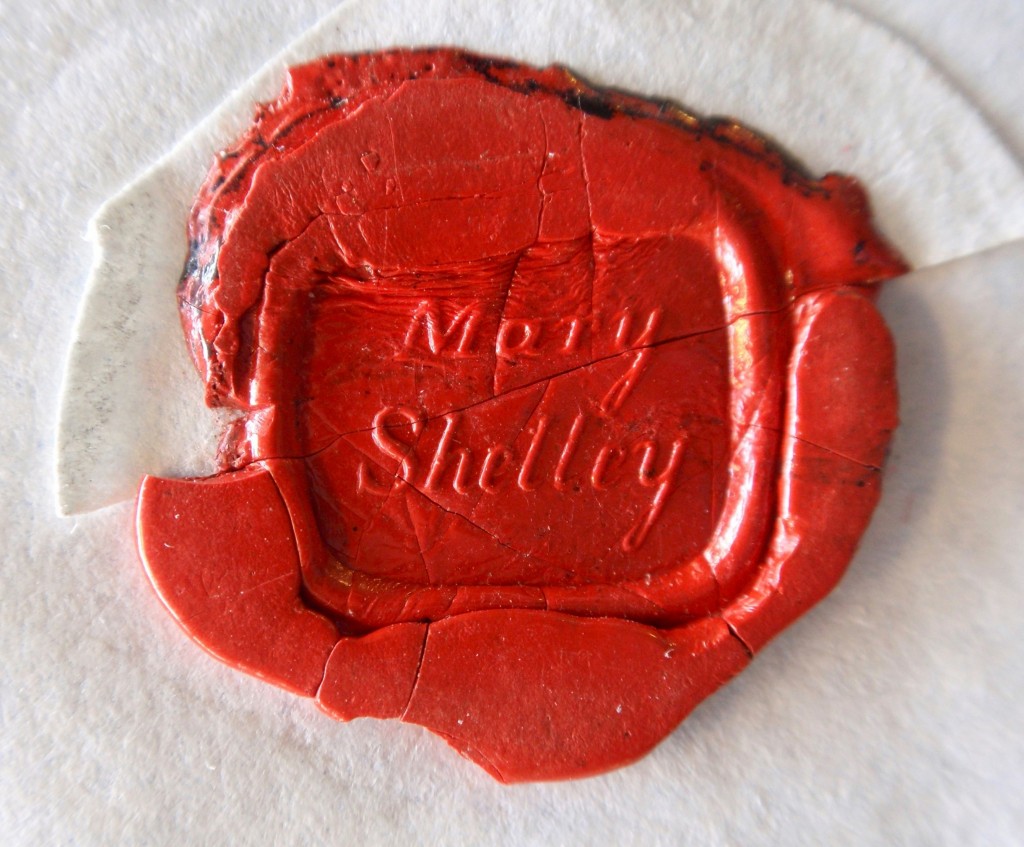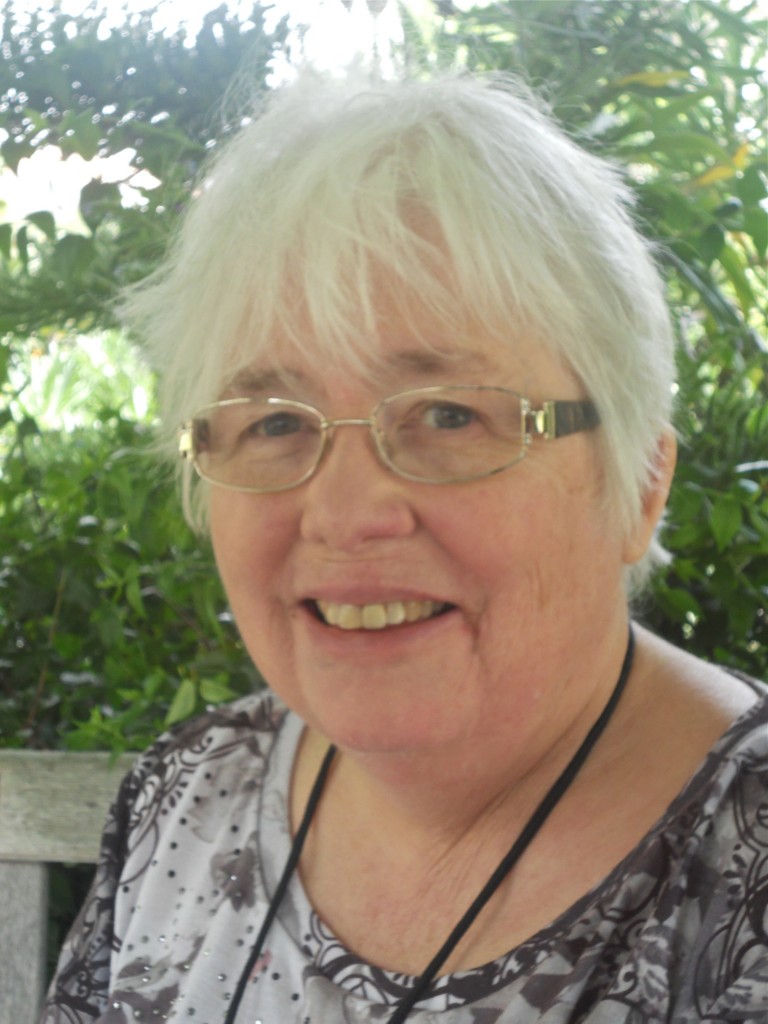This special guest post comes from Nora Crook, Professor Emerita, Anglia Ruskin University; Co-general Editor, The Complete Poetry of Percy Bysshe Shelley, Baltimore: MD: Johns Hopkins UP, 2000––). [in progress, 3 vols. published]
I’m a member of the English Department of Anglia Ruskin University, officially retired, but still research-active and involved in editing the works of the Shelleys – Mary Shelley, author of Frankenstein, and her husband, the poet Percy Bysshe Shelley. It’s a bit late for the 75th anniversary celebrations of Essex Record Office, but may I tell you about my favourite document, a bundle of thirteen letters by Mary Shelley in the Records of J. Horace Round (D/DRh C102)?
What excited me about these nondescript looking letters is that up to now they have been completely unknown to literary scholars. They are not in Betty Bennett’s monumental edition (1980–88) of her letters. New Mary Shelley missives surface from time to time, but this is the largest cache to surface for decades. The ERO archivists, of course, knew about them, because they had catalogued them with full descriptions containing snippets, without which I certainly would never have come across them via Seax in late 2011. They swam into my ken only because I was trying and find out if Mary Shelley had written an anonymous review (she hadn’t) of a novel by an obscure Irish novelist called Mary Crumpe. When I googled ‘Miss Crumpe’ and ‘Shelley’, up came the Seax catalogue and took me to ‘Papa [William Godwin] has half fallen in love with Miss Crumpe’. On reading the descriptions I realized their significance, and let the beauteous Miss Crumpe go by.
I followed up this lucky hit with a visit to the ERO together with my husband, Keith Crook, who had grown up in Chelmsford, and had spent happy days in the old ERO as a sixth-former. The staff couldn’t have been more helpful and informative, and for a small fee gave permission to photograph the letters, from which I was able to make accurate transcripts. The result, with a commentary, will shortly be published in America by the Keats-Shelley Journal (vol. 62), though not yet (6 January 2014) announced on the website (http://k-saa.org).
The letters were written between 1831 and 1849. Eight of them are to Horatio (Horace) Smith and the rest to his eldest daughter Eliza, aka ‘Tizey’. Smith, a stockbroker, wit, and minor author, became friends with Shelley in 1817, and handled his money affairs when he went to Italy. After Shelley drowned in 1822 the Smith family befriended his widow. They remained among her warmest friends until her death in 1851. Some letters from Smith to Mary Shelley have been preserved and are in the Bodleian Library, Oxford, but there was no reason to suspect that any of Mary Shelley’s letters to Smith had survived, Smith having a habit of destroying correspondence, or, if they had survived, that they would be in the ERO. In fact there is no direct connection between Mary Shelley, the Smiths (who lived in Brighton) and Essex. True, part of one of Mary Shelley’s novels, Lodore (1835), is set in the ‘flattest and least agreeable part of the county of Essex, about five miles from the sea’, where, I am happy to say, one character declares that ‘the people are honest’—but that’s a red herring. If she ever went there, I can’t think when!
The trail that might lead a Mary Shelley researcher step by step to the ERO unaided by Seax is a broken and zig-zag one, though you can work out retrospectively the likely path by which the letters arrived. ‘Tizey’, a spinster with a formidable memory, inherited her father’s literary papers. She sold four letters from Shelley, but failed to sell those from Mary Shelley. She died in her nineties in 1903. As she is known to have remembered her only nephew in her will, I am deducing that they came to the ERO through her. This nephew was the pugnacious historian of Essex, J. Horace Round, whose father, John Round, Lord of the Manor of West Bergholt, had married Smith’s youngest daughter, Laura. (There is an ERO publication of 2001 by W. Raymond Powell, John Horace Round: Historian and Gentleman of Essex; this has more details about Round, his family, and the Horace Smith connection.)
The catalogue descriptions in D/DRh C102 give a good idea of the topics of the letters. There’s no mention of Frankenstein, and the snippet about Miss Crumpe was, of course, just a joke – nothing was going on between Miss Crumpe and Mary Shelley’s aged father! Two are about asking Smith to help expurgate a novel by Edward Trelawney. It contained shockingly explicit content (by 1831 standards), and the publishers wouldn’t wear it. Others are about asking Smith for permission to print a letter in which Shelley expounded his atheistic views. The letters show Mary Shelley in many lights – playful, charming, wheedling, fashion-conscious, anxious about riots in Sussex, apologetic, flustered, in pain. The later letters to ‘Tizey’ are in a scrawl – showing, sadly, the effects of the brain tumour that was to kill her. Some remarks give a different twist to received ideas of how she regarded Shelley’s satirical poems and radical pamphlets (she comes over as much more positive than has been thought). She is very proud of her son, Percy, then in his second year at Cambridge, and becoming increasingly politically-minded, as his father had been. His only fault, she says, is – that he is too short.
To me, this is a prime example of how online catalogues of county record archives are helping scholars to ‘tread in unknown paths’, in Mary Shelley’s words. Many, many thanks to the superb ERO archivists!


